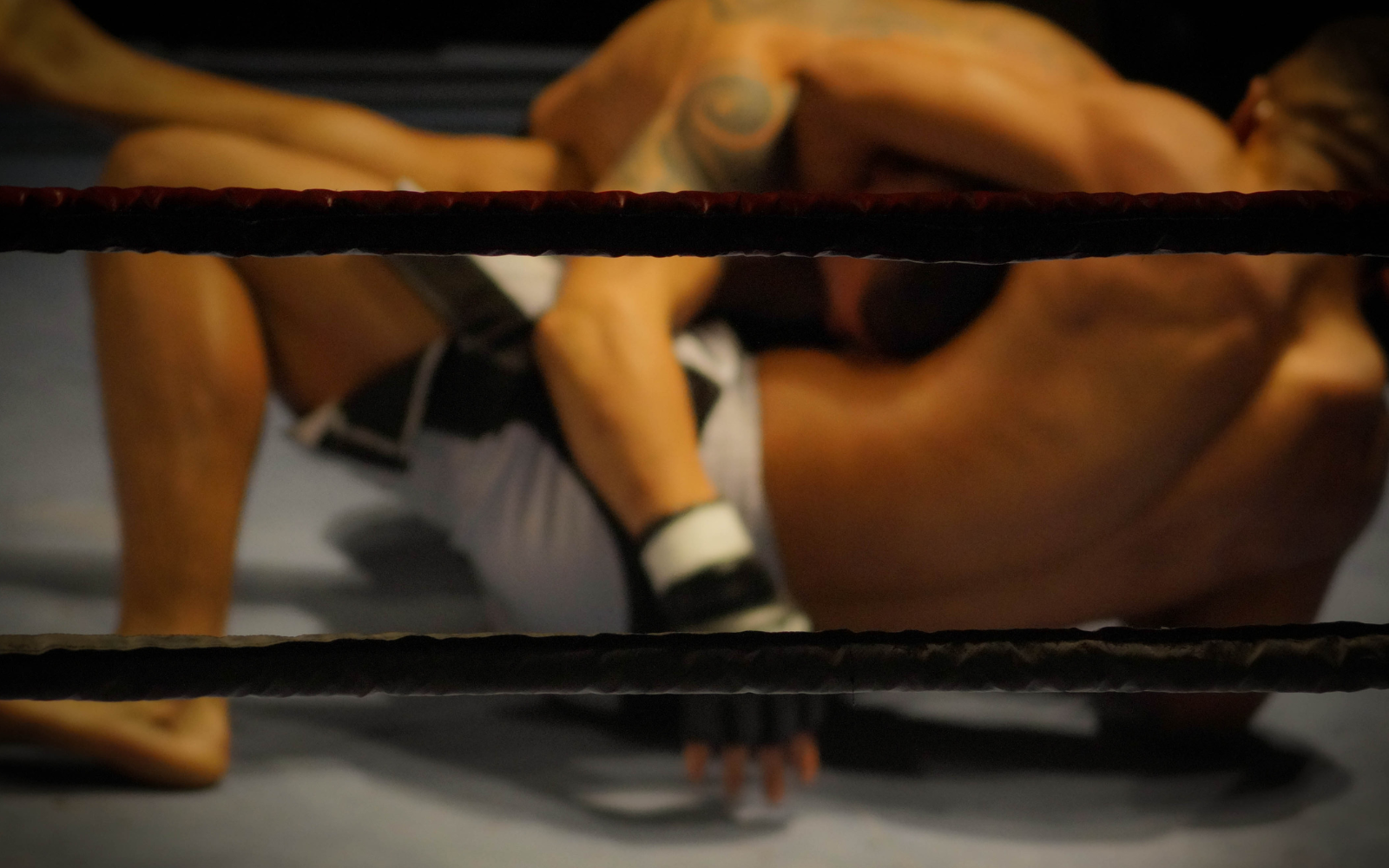The UFC and One Championship are two of the biggest and most popular mixed martial arts organizations in the world. Both promotions feature some of the most exciting fighters in the fight game and offer thrilling fight cards to fans around the globe. However, despite their similarities, the UFC and ONE Championship have distinct differences.
In this article, we will dive into the key differences between UFC and One Championship, exploring their rules, fighters, and overall fan experience. We will also look at their controversies.
So, whether you’re a die-hard UFC fan or a One Championship fanatic, get ready for a showdown as we compare and contrast these two giants of the MMA world.
- A Brief History of the UFC
- The History and Evolution of ONE Championship
- Ruse de Guerre: Differences in UFC and ONE Championship Rules
- Getting Paid: How UFC and ONE Championship pay their fighters
- Drug Testing Policies in UFC and ONE Championship
- How are the business models of UFC and One Championship different?
- Controversies in UFC and ONE Championship
- Notable UFC and One Championship Fighters
- Jon Jones: The Pound-for-Pound King of the UFC
- Valentina Shevchenko: A Veteran Striker
- Islam Makhachev: A New Champion
- Alexa Grasso: A Mexican Force to Reckoned With
- Jamahal Hill: Undefeated Knockout Artist
- Demetrious Johnson: King of UFC and ONE Championship
- Angela Lee: One Tough Cookie
- Christian Lee: A Rising Star
- Reinier de Ridder: A Tough Dutchman
- Nong Stamp: Thai Girl Power
- Conclusion
A Brief History of the UFC
The Ultimate Fighting Championship (UFC) is the top
The UFC was created by TV producer Art Davie and Brazilian jiu-jitsu expert Rorion Gracie. They aimed to showcase different martial arts styles in exciting matches with a single elimination format. The first UFC event took place on November 12, 1993, in Denver, Colorado. Eight fighters from different backgrounds, like boxing, wrestling, karate, sumo, and taekwondo, participated. Royce Gracie, Rorion’s brother, won the tournament by using his impressive jiu-jitsu skills to submit his opponents quickly.
As the UFC gained popularity, it also faced controversy because the fights had few rules and regulations. Some states and countries banned or restricted the events due to concerns about their violent nature. Politicians, media, and sports authorities criticized the UFC.
In 2001, the UFC was bought by Zuffa LLC, led by Lorenzo and Frank Fertitta and Dana White. They wanted to make the UFC more mainstream and acceptable. They introduced weight classes, unified rules, and strict drug testing. They also secured TV deals with networks like Spike TV and Fox Sports, expanding the UFC’s popularity to Canada, Brazil, Australia, and Europe.
The changes attracted talented fighters, who became stars in the MMA world. Fighters like Chuck Liddell, Randy Couture, Georges St-Pierre, Anderson Silva, Ronda Rousey, Conor McGregor, and Khabib Nurmagomedov gained fame for their incredible skills and extraordinary performances.
The UFC also created reality shows such as The Ultimate Fighter and Dana White’s Contender Series to showcase up-and-coming fighters and engage fans. They acquired other MMA organizations like Pride FC, WEC, Strikeforce, and Invicta FC, further solidifying their dominance.
Today, the UFC has over 600 fighters and hosts more than 40 annual events. They have partnered with ESPN for extensive coverage of their events on different platforms.
The UFC has broken numerous records for attendance and pay-per-view sales. UFC 229: Khabib vs. McGregor drew over 2 million pay-per-view buys and generated $86 million in revenue.
Beyond the world of sports, the UFC has become a cultural phenomenon. Its fighters have appeared in movies, TV shows, video games, magazines, and podcasts, and have a strong presence on social media. They have become recognizable figures outside of the MMA arena.
Dana White: The No Holds Barred President of the UFC
Dana White is the president of the Ultimate Fighting Championship (UFC), the world’s largest mixed martial arts (MMA) organization. He is widely credited for transforming the UFC from a struggling company into a global sports phenomenon.
White was born in Manchester, Connecticut, on July 28, 1969. He grew up in a rough neighborhood and developed a passion for boxing early on. He dropped out of high school and worked as a bellman at a hotel in Boston, where he met several MMA fighters and trainers.
In 1992, White moved to Las Vegas and started his own boxing gym. He also became the manager of some MMA fighters, including Tito Ortiz and Chuck Liddell. In 2001, he learned that the UFC was for sale and convinced his childhood friends, Lorenzo and Frank Fertitta, to buy it for $2 million.
White became the president of the UFC and began to revamp the organization. He implemented new rules, secured sanctioning from athletic commissions, and signed a deal with Spike TV to air a reality show called The Ultimate Fighter. He also expanded the UFC’s international presence and signed lucrative contracts with ESPN, Fox Sports, and other media outlets.
White is known for his outspoken and controversial personality. He often engages in feuds with fighters, promoters, journalists, and fans.
White is married to Anne White and has three children: Dana Jr., Aidan, and Savannah. He lives in Las Vegas and has a net worth of over $500 million.
The History and Evolution of ONE Championship
One Championship is a Singapore-based mixed martial arts (MMA) promotion founded in 2011 by entrepreneur Chatri Sityodtong and former ESPN Star Sports executive Victor Cui.
The promotion aims to showcase the best of Asian martial arts and culture and provide a platform for Asian fighters to compete on the global stage. One Championship has grown rapidly since its inception, expanding its roster of fighters, events, and media partnerships across Asia and beyond.
Today, One Championship is widely regarded as Asia’s largest and most prestigious MMA organization, with a global fan base of over 100 million viewers.
One Championship has also diversified its offerings, launching One Esports, One Studios, One Super Series, and One Hero Series, among others. One Championship’s vision is to ignite the world with hope, strength, dreams, and inspiration through the power of martial arts.
The Warrior Entrepreneur: Chatri Sityodtong
Chatri Sityodtong is the founder and CEO of ONE Championship, Asia’s largest sports media property.
Chatri Sityodtong was born in 1971 to a Thai father and a Japanese mother. He grew up in a well-to-do family in Thailand, where he started training in Muay Thai at the age of six under the legendary Kru Yodtong Senanan of Sityodtong Camp in Pattaya. He eventually received the ring name Yodchatri Sityodtong, meaning “the extraordinary warrior”, from his teacher.
He had over 30 professional fights in Muay Thai, and later earned a brown belt in Brazilian Jiu-Jitsu under Renzo Gracie. He is also a certified senior Muay Thai instructor and one of the world’s four conservators of Sityodtong Muay Thai.
Chatri’s life changed dramatically when his family lost everything in the Asian Financial Crisis in 1997. His father abandoned the family, leaving Chatri to take care of his mother and younger brother. He experienced extreme poverty and hardship, surviving one meal daily and sleeping on the floor.
He decided to pursue higher education in the US, hoping to pull his family out of poverty. He graduated with a BA in Economics from Tufts University in 1994, and later obtained an MBA from Harvard Business School in 1999. He credits his mother for giving him courage, strength, belief and love throughout his journey.
Chatri started his career as an investment analyst at Fidelity Investments, covering various industries. He then launched his first startup, Nextdoor Networks, a provider of e-commerce infrastructure, with a classmate from Harvard. He later became a managing director at Maverick Capital, a US$12 billion hedge fund.
He moved to Singapore in the mid-2000s, where he founded ONE Championship in 2011. ONE Championship is now the world’s largest martial arts organization, broadcasting to over 150 countries and reaching millions of fans. Chatri is also the star of The Apprentice: ONE Championship Edition, a reality TV show that features 16 contestants competing for a job at ONE Championship.
Chatri Sityodtong is not only a successful entrepreneur and martial artist, but also a philanthropist and a motivational speaker. He supports various causes such as Global Poverty Project, Boys’ Town Home, Singapore Children’s Society and Children’s Cancer Foundation.
Ruse de Guerre: Differences in UFC and ONE Championship Rules
One of the most obvious differences between UFC and One Championship is the variety of disciplines that they offer. While UFC focuses exclusively on MMA, One Championship hosts fights in Muay Thai, kickboxing, MMA and submission grappling on the same card. This means that fans can enjoy a range of martial arts talent and styles at the same event, and fighters can showcase their skills in different domains.
One Championship has some of the best Muay Thai fighters in the world, such as Rodtang Jitmuangnon, Nong-O Gaiyanghadao and Stamp Fairtex, who compete in 4-ounce MMA gloves instead of the standard boxing gloves. This makes the fights more thrilling and dangerous, as the smaller gloves allow for more speed, power and damage.
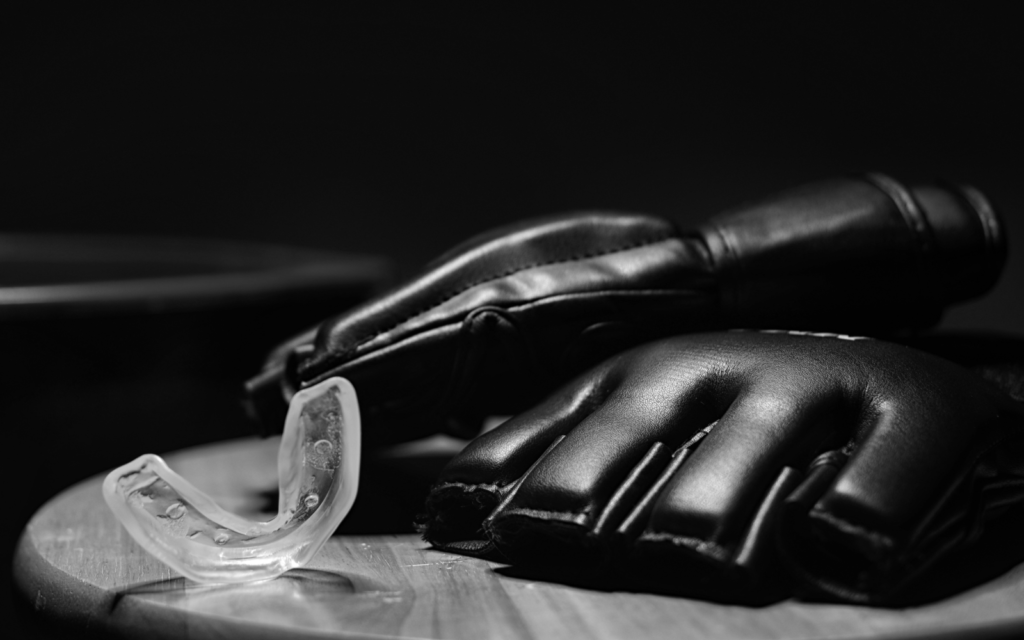
Another difference between UFC and One Championship is the weight classes and the weight-cutting rules. One Championship has more weight divisions than UFC, with the presence of the atomweight (105 lbs) and the men’s strawweight (125 lbs) divisions.
One Championship also has a different approach to weight-cutting, as it requires its fighters to compete at their natural weight instead of cutting weight before the fight. This is done by using hydration tests and regular weigh-ins to ensure that fighters are healthy and hydrated. This rule prevents dehydration, health risks, and unfair advantages from extreme weight-cutting practices.
The most significant difference between UFC and One Championship is their ruleset for their MMA fights. UFC follows the Unified Rules of MMA, a set of regulations widely used by most MMA organizations in North America.
One Championship follows the Global Martial Arts Ruleset, a blend of rules from Asian and non-Asian martial arts. These rules are similar to those used by UFC, with some exceptions that make them more diverse and exciting. One Championship allows knees to the head of a downed opponent, which is banned in UFC. This opens up more possibilities for striking and finishing on the ground.
One Championship also bans some moves that are allowed in UFC, such as 12-to-6 elbows (elbows that strike vertically downward), heel hooks (a type of leg lock that targets the heel), and suplexes (a type of throw that involves lifting and slamming an opponent). One Championship considers these moves too dangerous or unsportsmanlike and can result in disqualification or penalty if used.
One Championship also has a different scoring system than UFC, as it judges the fight as a whole instead of round by round. This means fighters are encouraged to go for the finish instead of playing it safe or stalling.
Getting Paid: How UFC and ONE Championship pay their fighters
UFC and One Championship have different approaches to compensating their fighters, which affect their financial incentives, career prospects, and overall satisfaction.
UFC uses a pay-per-view (PPV) model, where fighters receive a base salary and a bonus based on the number of PPV buys for their event. The base salary varies depending on the fighter’s contract, ranking, and experience, but it is usually lower than the PPV bonus.
The PPV bonus is calculated as a percentage of the total revenue generated by the PPV sales, ranging from a few hundred thousand to several million dollars.
UFC also pays fighters discretionary performance bonuses, such as winning a fight, delivering a knockout, or putting on an exciting show. However, these bonuses are not guaranteed and depend on the subjective judgment of the UFC president, Dana White.
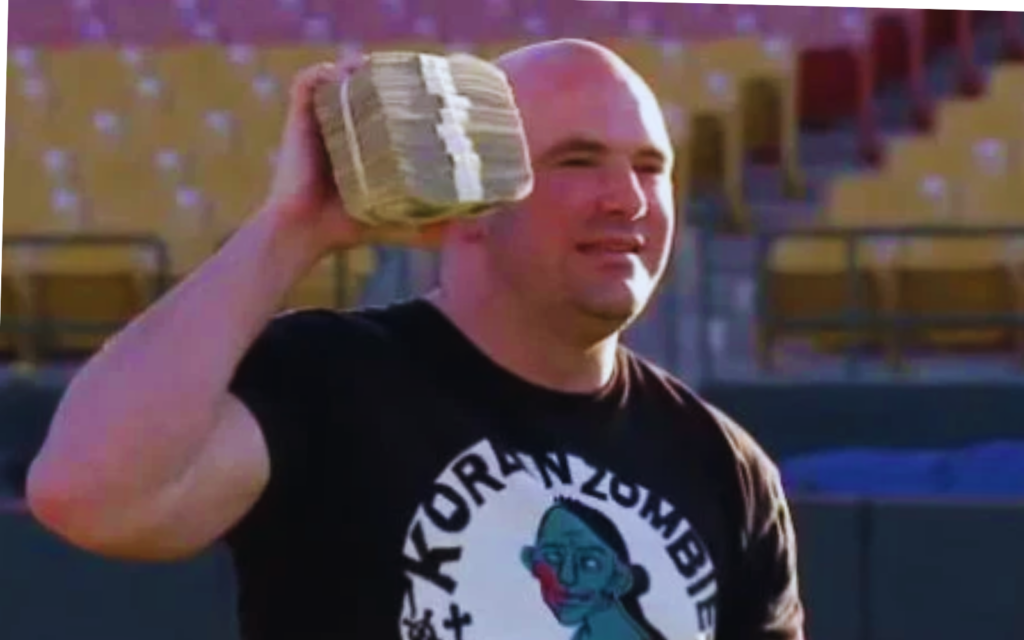
One Championship uses a fixed salary model, where fighters receive a guaranteed amount of money for each fight, regardless of the event’s popularity or their performance. The fixed salary is determined by the fighter’s contract, usually negotiated for a certain number of fights or years.
One Championship also pays fighters an appearance fee for showing up at the event and a win bonus for defeating their opponent. However, these fees and bonuses are much smaller than the fixed salary and do not vary significantly across events or fighters.
The main advantage of the PPV model is that it rewards fighters who can attract a large audience and generate high revenue for the organization. Popular, charismatic, or controversial fighters can earn much more money than their peers who are less marketable or exciting. The PPV model also incentivizes fighters to take risks and pursue finishes, as they can increase their chances of getting a performance bonus or a higher PPV share.
The main disadvantage of the PPV model is that it creates uncertainty and inequality among fighters, as their income depends on factors that are beyond their control or not directly related to their skills.
Fighters who are unlucky, injured, or overlooked can earn much less money than they deserve or expect.
The main advantage of the fixed salary model is that it provides stability and security for fighters, as they know exactly how much money they will make for each fight.
Fighters who are consistent, reliable, or loyal can benefit from this model, as they can plan their finances and careers accordingly. The fixed salary model also reduces the pressure and stress on fighters, as they do not have to worry about pleasing the fans or the organization with their performance.
The main disadvantage of the fixed salary model is that it limits the potential earnings and growth of fighters, as they cannot capitalize on their popularity or success. Fighters who are talented, ambitious, or innovative can feel frustrated by this model, as they cannot negotiate for higher pay or seek better opportunities elsewhere.
UFC’s PPV model rewards fighters who can generate high revenue but creates uncertainty and inequality among them. One Championship’s fixed salary model provides stability and security for fighters but limits their potential earnings and growth.
Drug Testing Policies in UFC and ONE Championship
The UFC has a strict and comprehensive drug testing program administered by the United States Anti-Doping Agency (USADA). USADA is an independent and non-profit organization that oversees the anti-doping tests for Olympic and Paralympic sports in the US.
USADA conducts both in-competition and out-of-competition testing for UFC fighters, using urine and blood samples. USADA also has the authority to impose sanctions on fighters who test positive for prohibited substances, such as performance-enhancing drugs (PEDs), recreational drugs, or masking agents. The sanctions can range from a warning to a lifetime ban, depending on the severity and frequency of the violation.
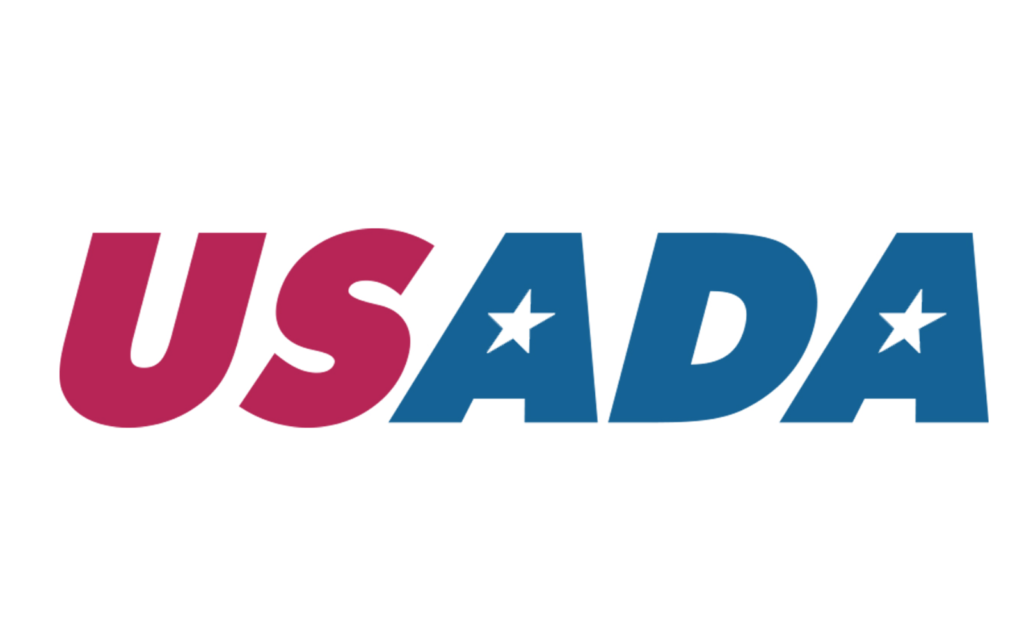
One Championship does not drug test athletes, but rather relies on the integrity and honor of its fighters to compete clean. One Championship does not conduct any pre-fight or post-fight testing for its fighters but instead asks them to sign a contract that states they will not use any prohibited substances. One Championship may request a voluntary test from a fighter or conduct an investigation based on credible evidence and if found guilty, One Championship may impose penalties such as fines, suspensions, or termination of contract.
UFC aims to ensure a level playing field and protect the health and safety of its fighters by enforcing a rigorous and transparent anti-doping program. One Championship trusts its fighters to uphold the spirit of martial arts and compete with honor and respect by following a self-regulatory contract.
How are the business models of UFC and One Championship different?
While the UFC and One Championship are the two biggest MMA organizations in the world, they have very different approaches to running their businesses.
Revenue streams
UFC relies heavily on pay-per-view (PPV) sales as its main source of income, while One Championship focuses more on sponsorship deals and media rights. According to Forbes, UFC generated $900 million in revenue in 2019, with 80% coming from PPV sales.
The same year, One Championship reported $250 million in revenue, with 60% coming from sponsorship deals and 30% from media rights.
PPV sales are more lucrative but also more volatile, depending on the popularity and quality of the events. Sponsorship deals and media rights are more stable and dependent on market conditions and competition.
Fighter pay:
UFC pays its fighters based on a tiered system, where the top stars earn millions of dollars per fight while the lower-ranked fighters earn a much lower fighter purse.
One Championship pays its fighters based on a flat fee system, where every fighter earns the same amount per fight, regardless of their ranking or popularity.
International Business Times has reported that the average UFC fighter earned $147,965 in 2020, while the median One Championship fighter salary is $27,000. However, these figures do not include bonuses, incentives, or other sources of income that soldiers may receive.
UFC fighters also have to pay for their expenses, such as travel, training, and taxes, while One Championship covers these costs for its fighters.
Expansion strategies:
UFC has a global presence, with events held in various countries and regions worldwide. One Championship has a regional focus, with events held mostly in Asia and occasionally in other parts of the world.
UFC has a larger and more diverse fan base but also faces more competition and regulation from other MMA organizations and governing bodies.
One Championship has a loyal and growing fan base in Asia but also faces challenges in breaking into new markets and attracting international audiences.
Marketing & Branding:
One of the main differences between UFC and One Championship is their target markets. UFC primarily focuses on the North American market, with a strong fan base and a lucrative media deal with ESPN. UFC also has a global presence, with events in Europe, Asia, Australia, and South America, but its main revenue source is the US market.
On the other hand, One Championship is based in Singapore and aims to capture the Asian market, where MMA is growing rapidly. One Championship has events in countries like China, Japan, Indonesia, Thailand, and India and has partnerships with local broadcasters and sponsors. One Championship also has a presence in the US market, but it is nowhere near as dominant as UFC.
Another difference between UFC and ONE Championship is their brand identity and values. UFC is known for its aggressive and controversial style of marketing, which often involves trash-talking, rivalries, and hype. UFC promotes its fighters as individual stars who have their own personalities and stories. UFC also emphasizes the entertainment aspect of MMA, with flashy production and spectacle.
ONE Championship, on the other hand, is known for its respectful and positive style of marketing, which often involves honor, humility, and inspiration. One Championship promotes its fighters as role models and emphasizes the martial arts aspect of MMA, with traditional values and heritage.
UFC is known for its consistent and high-quality product, which features the best fighters in the world across various weight classes and divisions. UFC has a clear ranking system and a unified set of rules, which makes it easy for fans to follow and understand. UFC also has a strong history and legacy in MMA, with iconic champions and events.
ONE Championship is known for its diverse and creative product, which features different types of martial arts and formats. ONE Championship has various rulesets and categories, such as Muay Thai, and rules for kickboxing bouts, grappling, and mixed rules, which makes it appealing for fans of different styles. One Championship also has a unique feature called the One Super Series, which showcases striking-only matches between world-class athletes.
UFC has a strong and consistent brand identity, with a logo, slogan, and color scheme easily recognizable by fans and consumers.
One Championship has a more flexible and adaptable brand identity, with different logos, slogans, and color schemes for different markets and events.
Controversies in UFC and ONE Championship
Despite their successes, UFC and ONE Championship each have had their share of controversies that raise questions about their ethics, safety, and legitimacy.
UFC Controversies
Fighter pay:
UFC fighters are often criticized for being underpaid compared to other
Many fighters have complained about the lack of transparency and bargaining power in their contracts and the UFC’s monopoly over the MMA market. African UFC fighter Francis Ngannou in particular, faced off with the promotion and is one of the few whose career thrived afterward.
Weight Cutting
Weight cutting is the practice of losing a large amount of weight in a short period before a fight, usually by dehydration. This is done to gain an advantage over a naturally smaller or weaker opponent. However, weight cutting can also have serious health consequences like kidney failure, brain damage, and death. Several UFC fighters, such as Renan Barao, Khabib Nurmagomedov, and Darren Till, have missed weight or suffered medical complications due to weight-cutting.
Drug Testing:
UFC has partnered with the United States Anti-Doping Agency (USADA) to conduct random drug tests on its fighters. The aim is to prevent the use of performance-enhancing drugs (PEDs) and other banned substances that could give an unfair advantage or harm the fighters’ health.
Some fighters have accused USADA of being inconsistent, unfair, or corrupt in their testing and sanctioning process. For example, Jon Jones, one of the most dominant fighters in UFC history, has tested positive for PEDs multiple times but has received lenient punishments or exemptions from USADA.
One Championship Controversies
Here are some troubling controversies you need to know about!
Fighter Safety:
One Championship has been criticized for lacking fighter safety standards and regulations.
Unlike UFC, One Championship does not use weight classes based on hydration tests, which means that fighters can still cut weight by dehydration and face opponents who are much heavier than them. This can lead to severe injuries or fatalities, as seen in the case of 21-year-old Chinese fighter Yang Jian Bing, who died in 2015 after a failed weight cut for a One Championship fight.
Fight Fixing
One Championship has also been accused of fixing fights or manipulating outcomes to favor certain fighters or markets. For example 2018, Eddie Alvarez, a former UFC champion who signed with One Championship, lost his debut fight against Timofey Nastyukhin by TKO in the first round. Many fans and analysts speculated that the fight was rigged to boost Nastyukhin’s profile and appeal to the Russian audience.
In 2019, one of One Championship’s biggest stars and champions, Angela Lee lost her title to Xiong Jing Nan by TKO in the fifth round. However, some observers claimed that Lee was winning the fight until she inexplicably attempted a risky submission that allowed Xiong to escape and finish her.
Misleading Marketing
One Championship has also been criticized for its marketing strategies and claims often exaggerated or misleadingly. For example, One Championship claims to be “the largest global sports media property in Asian history” and “the home of martial arts”, but these statements are not backed by verifiable data or evidence.
One Championship also claims to have a global fan base of 2.7 billion people, but this number is based on potential reach rather than actual viewership or engagement.
Notable UFC and One Championship Fighters
Both UFC and ONE Championship sign only a high quality of fighters. UFC is the most popular and established MMA promotion in the world, with a roster of over 600 fighters across 12 weight classes. UFC fighters are known for their high-level skills, toughness and charisma. Some of the UFC’s high-profile fighters today are:
Jon Jones: The Pound-for-Pound King of the UFC
The former light heavyweight champion and current heavyweight champion, Jones is widely regarded as one of the greatest MMA fighters of all time. He has a record of 28-1-1, with wins over legends like Daniel Cormier, Alexander Gustafsson and Lyoto Machida. He is ranked #1 in the men’s pound-for-pound rankings.
Valentina Shevchenko: A Veteran Striker
The reigning flyweight champion, Shevchenko is a dominant force in the women’s division. This female fighter has a record of 23-3, with wins over Joanna Jedrzejczyk, Jessica Andrade and Holly Holm. She is ranked #2 in the women’s pound-for-pound rankings and is regarded as one of the greatest UFC fighters of Russian heritage.
Islam Makhachev: A New Champion
The current lightweight champion, Makhachev is a rising star in the sport and an expert sambo fighter. He has a record of 22-1, with wins over Rafael dos Anjos, Dan Hooker, Thiago Moises, and Alexander Volkanovski. He is ranked #3 in the men’s pound-for-pound rankings.
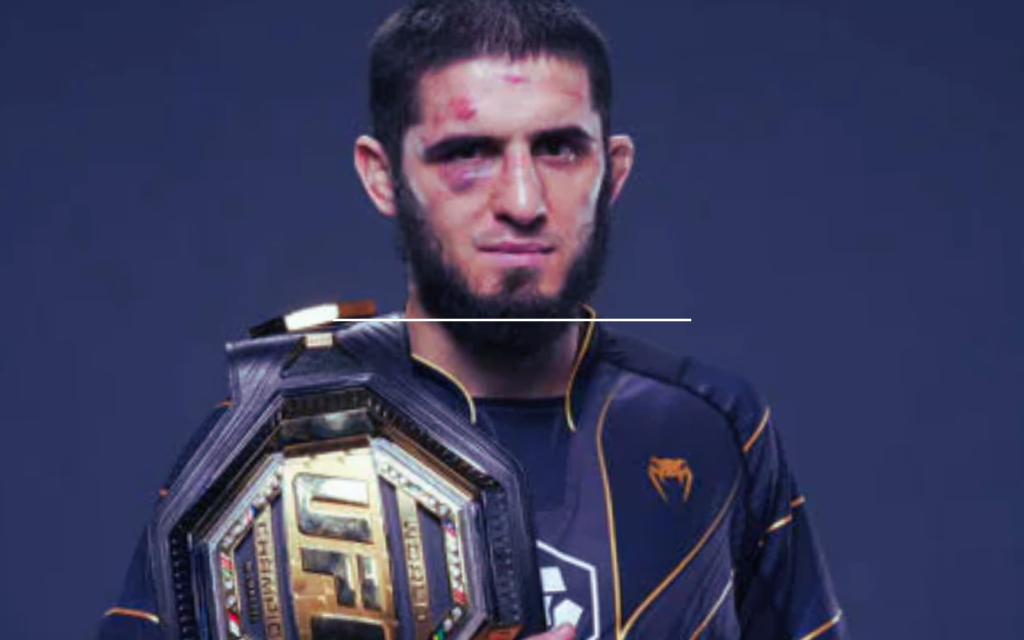
Alexa Grasso: A Mexican Force to Reckoned With
The current strawweight champion, Grasso is a young and talented fighter from Mexico. She has a record of 16-3, with wins over Carla Esparza, Yan Xiaonan and Ji Yeon Kim. She is ranked #1 in the women’s pound-for-pound rankings.
Jamahal Hill: Undefeated Knockout Artist
The current light heavyweight champion, Hill is an undefeated knockout artist. He has a record of 11-0-1, with wins over Paul Craig, Ovince Saint Preux and Klidson Abreu. He is ranked #15 in the men’s pound-for-pound rankings.
ONE Championship has a roster of over 500 fighters across 8 weight classes and the promotion’s fighters are known for their diverse backgrounds, styles and cultures. Some of the best ONE Championship fighters today are:
Demetrious Johnson: King of UFC and ONE Championship
The former UFC flyweight champion and current ONE flyweight champion, Johnson is considered one of the best MMA fighters ever (… and one of the shortest UFC fighters ever). He has a record of 32-4-1, with wins over Adriano Moraes, Kyoji Horiguchi and Joseph Benavidez. He is ranked #1 in the ONE flyweight rankings.
Angela Lee: One Tough Cookie
The reigning atomweight champion and former strawweight champion, Lee pioneered women’s MMA in Asia. She has a record of 12-3, with wins over Mei Yamaguchi, Xiong Jing Nan and Michelle Nicolini. She is ranked #3 in the women’s pound-for-pound rankings.
Christian Lee: A Rising Star
The current lightweight and featherweight champion, Lee is a prodigy and a finisher. He has a record of 17-4, with wins over Thanh Le, Martin Nguyen and Shinya Aoki. He is ranked #4 in the men’s pound-for-pound rankings.
Reinier de Ridder: A Tough Dutchman
The current middleweight and light heavyweight champion, de Ridder is a submission specialist from the Netherlands. He has a record of 16-1, with wins over Aung La N Sang, Leandro Ataides and Gilberto Galvao. He is ranked #7 in the men’s pound-for-pound rankings.
Nong Stamp: Thai Girl Power
The former kickboxing and female Muay Thai champion and current MMA fighter, Nong Stamp is a versatile and charismatic fighter from Thailand. She has a record of 10-2 in MMA, with wins over Ritu Phogat, Sunisa Srisen and Asha Roka. She is ranked #6 in the women’s pound-for-pound rankings.
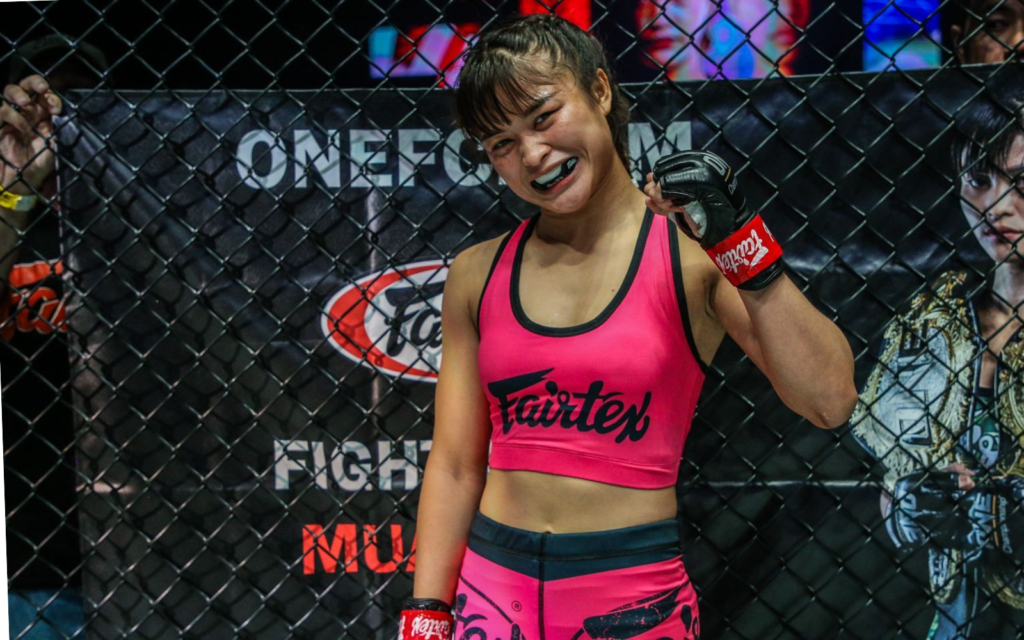
Conclusion
In this article, we’ve examined the unique strengths and differences between the UFC and ONE Championship – the world’s two biggest promotions. Whether you prefer the glitz and glamour of the UFC or the emphasis on respect and martial arts values in One Championship, one thing is for certain: the world of mixed martial arts is an ever-evolving landscape that continues to captivate and inspire and these two promotions are currently leading the way.
